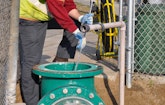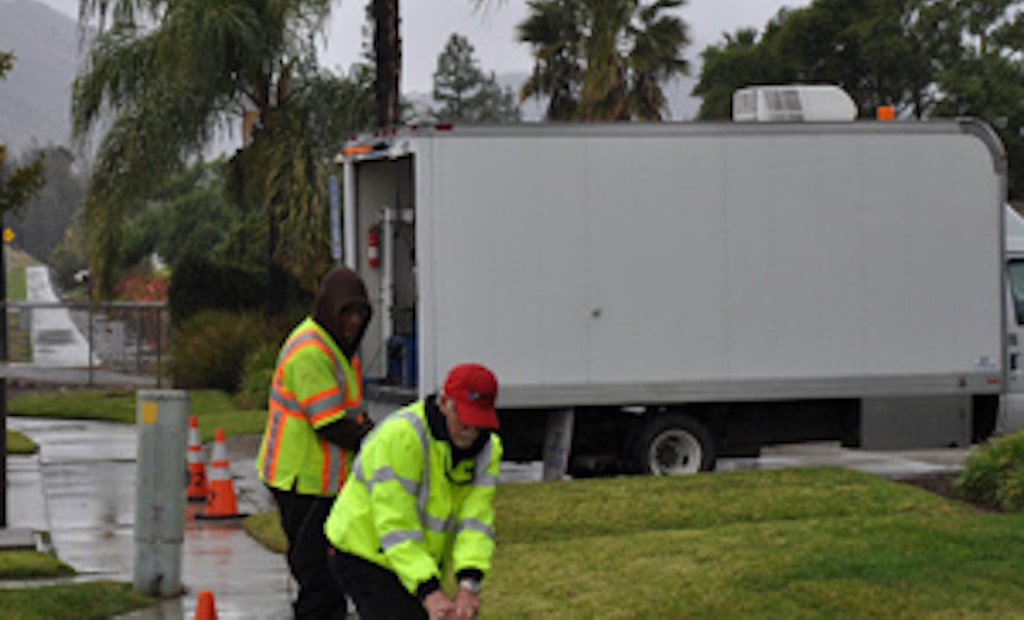Recent economic times have challenged almost every contractor in the country, especially those in the pipeline inspection and cleaning industry. With less work on hand, competition for existing work has intensified.
In fact, the number of companies seeking work has actually increased. Companies that once thrived in the construction industry have sought survival in alternative markets. Many have identified the inspection and cleaning industry as their target for resurgence.
The added competition and fierce fighting for market share have had a significant effect on pricing. Most markets across the country have experienced a dramatic drop in production charges. For example, Southern California has seen price decreases of 40 to 50 percent over the past few years.
No one likes the lower prices. It makes running a business very difficult. But, it is today’s reality. So, if we are to survive, we must find ways in which to stay competitive.
Survival
So how do we compete in markets that have seen substantial decreases in pricing? How do we react when the competition is throwing out ridiculously low numbers? What can we do when even our lowest numbers can’t win a bid?
Undoubtedly, there will be companies that won’t make it. They will be unable to compete in this market and will eventually give up. But I would never consider throwing in the towel. I believe that there are things that can be done in order to survive and even thrive in this new market.
So what is the answer? Simply stated, we must reinvent ourselves. We must look at how we run our businesses and then figure out how to change it in a positive way. We must look at ourselves objectively and be able to identify what is working and what is not. The bottom line is that we must figure out how to remain profitable in this newly defined marketplace.
Profit is the engine that drives business. It is what allows us to invest in new technology and replace existing vehicles and equipment. Profit that is set aside saves us when catastrophe hits and major repairs are needed. We must always make a profit, otherwise it will only be a matter of time before we cease to exist. We must never work to break even, because if we are not making a profit then we are losing money.
So how do we remain relevant when prices have gone in the toilet? To begin with, we need to look at areas on which we can have a positive effect. We can’t change the price of gas, we can’t really change the cost of labor, and we can’t keep low-ball contractors from bidding. So, we must focus on the things that we can change.
If the prices we charge, whether they are hourly or by the foot, have dropped, then we must figure out how to compete at those new prices. Since we need to continue to make the same profit margins as before, there is only one thing we can do. We must figure out how to increase our production levels. We must take an objective view of how we perform our jobs and then find ways to improve.
When facing financial shortfalls, production is the easiest and most effective aspect of business on which to affect change. This is an area that we can take control over. However, we need to be very careful not to compromise the quality of our product as we make changes.
My experience
As a business owner, I had established a minimum production acceptance level of 2,500 linear feet per day for my CCTV inspection crews. Being a former inspection operator, this number seemed reasonable. Besides, at this production level, we had been making a profit.
When faced with 40 to 50 percent drops in market rates, production standards had to be reevaluated. A closer look uncovered some interesting things.
What we found was that the crews weren’t looking at the 2,500 feet as a minimum standard. In fact, they were actually looking at this number as a maximum standard. If at 11 a.m. they had already achieved 1,800 feet of inspections, then they tended to take it easy and skate for the rest of the day. Upon closer examination, we noticed that our production rates had been pretty consistent over the past few years. The crews were hardly ever under the minimum standard, but rarely over by more than a few hundred feet.
At this point there was the realization that a major overhaul was needed. To begin with, a new minimum standard would need to be established and a well thought out training program would need to be put in place in order to retrain our operators from the bottom up.
The first thing we did was change our acceptable minimum production to 4,000 linear feet per day. Sure there was grumbling. Some operators even claimed that this number was impossible to achieve. But we were expecting that.
Next, we sat down with our operators and discussed work ethics. It was important to establish what was and was not acceptable in our work environment. Areas where time was wasted during the workday were identified and parameters of acceptability were established.
It was important to have employees buy into our new philosophy. In order to do that we had to make sure that they realized what was at stake. Simply stated, it was the survival of our company and the continued existence of their jobs. Once this was understood, we could begin discussing the changes that each operator would need to make in order for this transition to be successful.
It was important for the operators to understand that they were expected to remain fully productive throughout the day. Personal time on the phone would no longer be accepted. Chitchatting with co-workers and unauthorized breaks would need to be completely eliminated.
The operators needed to understand that money was only being made when the camera was in the line. Every effort needed to be made to ensure that as many inspections would take place each day as possible.
Maximizing productivity was critical to our survival. Increasing production required that each operator step up his game. That meant that they needed to begin approaching their jobs with a sense of urgency. Every minute of the day had to be used productively. There could never be an idle moment. Everything in their day had to be geared toward maximizing production.
Part of our strategy was to teach the operators how to multitask. Whenever possible, they were encouraged to perform additional tasks. For example, instead of just sitting idly while the camera was coming back, they were challenged to be busy preparing and planning for the next inspection.
In order to make this all work, a means of accountability needed to be established. Operators needed immediate feedback. If they didn’t think that anyone was watching, they would easily lapse back into their old habits. A program was established where production was reported and acknowledged. Reporting production to their supervisor on a daily basis helped keep them focused. Realizing that they would receive positive or negative feedback based on their production level for that day was key.
By monitoring their production closely, we were also able to spot problems and correct them long before they became chronic.
The net result was a significant increase in our daily production rates. Instead of 2,500 feet of CCTV inspection each day, we began seeing daily production rates of 3,500, 4,000 and in some instances 5,000 feet.
The impact on morale was significant as well. Healthy competition between operators became the norm and genuine pleasure resulted when high production rates were achieved.
The equipment
You can have the best and most productive operators in the world, but if you don’t have well maintained equipment, it won’t mean a thing. If the equipment and vehicles are neglected, crews will be unable to achieve their goals. If the equipment is constantly breaking down, it will prevent them from being productive and profitability will be compromised.
An effective preventive maintenance program requires more than just performing scheduled maintenance. It is a commitment to daily inspection and replacement of necessary parts and fixtures. For example, combination units have various filters that need to be cleaned each day. Neglecting this small maintenance procedure will not only accelerate equipment failure, it will lead to unnecessary and costly repairs that will severely cut into a company’s bottom line.
Computers also need regular attention, especially on pipeline inspection vans. Neglecting regular maintenance and cleaning can cause premature problems that can lead to very costly data loss and downtime.
Identifying and mitigating bottlenecks that affect time in the field is critical. Every wasted minute becomes important when maximizing production. Even lackadaisical behavior at the beginning and end of each day can cost an hour or two of productive time.
Staying profitable in today’s marketplace is a challenge for everyone. However, those who are willing to make positive changes and streamline their operation will benefit well into the future.









